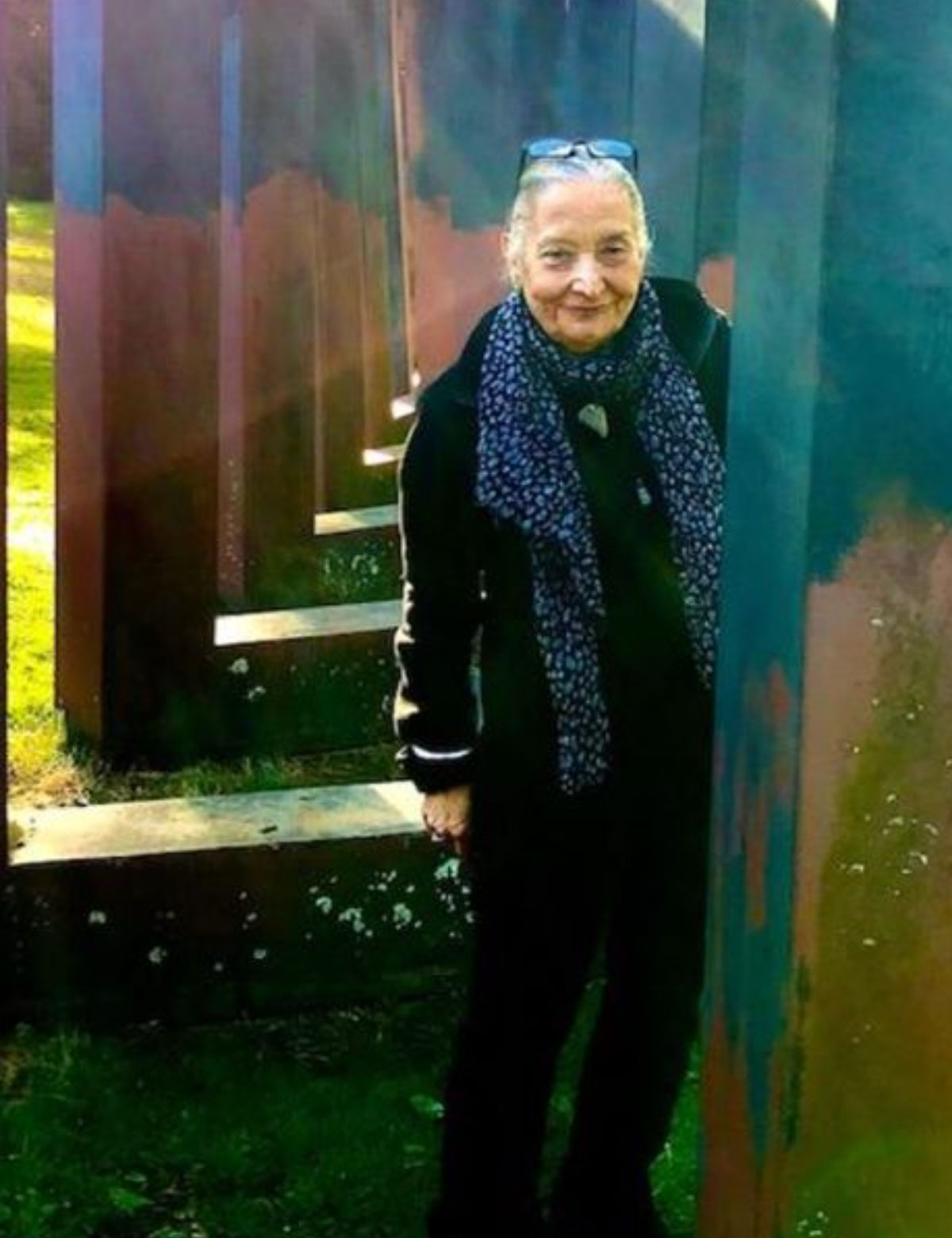
Miriam Berman: Passionate Urban Archivist
Miriam Berman, an urban archivist, author, and graphic designer, has been documenting the evolution of NoMad in Manhattan for decades. Her fascination began in the 1970s, long before NoMad became the trendy destination it is today. At that time, the neighborhood didn’t have its now-famous name, but Berman quickly fell in love with its rich history and unique architectural landscape. Over the years, she has dedicated herself to preserving the area’s cultural and architectural heritage.
Berman’s introduction to the neighborhood came in 1970 when she began working at a record company in the Flatiron Building’s penthouse. She fondly remembers walking around the parapet of the building with binoculars in hand, “We went out to see if we could spot the Statue of Liberty. It was quite an expansive panorama and the view of the MetLife tower to the east was magnificent.” She immediately became enamored with the neighborhood.
Berman was particularly captivated by the intersection of Broadway, Fifth Avenue, and 23rd Street — a centuries-old grid system, established in 1811, that continues to mark one of Manhattan’s most important crossroads. This was her first introduction to the area’s history, and it wasn’t long before she was deeply enmeshed in documenting its architectural and cultural significance.
According to Berman, in 1999, the official naming of NoMad occurred. In 2001, the Madison Square North Historic District was established, which formally recognized the importance of this historic area. This recognition set the stage for NoMad’s transformation into an internationally known neighborhood. Despite its modern evolution, Berman’s love for the area is deeply rooted in its history and architecture.
Berman’s passion for preserving NoMad’s historical structures is evident in her role on the Historic Districts Council, where she helps review and protect the integrity of historical buildings across New York City. Her work in preserving NoMad’s past goes beyond physical buildings; it’s about preserving the stories and history ensconced in these structures.
A milestone in Berman’s career was the publication of her book “Madison Square: The Park and Its Celebrated Landmarks” in 2001. Based on her many walks around Madison Square Park, the book meticulously documents the area’s architectural history, ensuring that even the smallest structures were acknowledged. A fortuitous partnership with her publisher resulted in a year-and-a-half-long refinement of the manuscript, culminating in a comprehensive tribute to the neighborhood. For decades, Berman has given walking tours in NoMad.
One of Miriam Berman’s favorite stories concerns the MetLife North Building. It’s a fascinating account of the construction of what was initially intended to be one of New York City’s tallest skyscrapers. Located between 24th and 25th Streets, the MetLife North Building occupies an entire block. In the race to build the world’s tallest structure, the MetLife North Building was designed to reach 100 stories, rivaling the Empire State Building and the Chrysler Building. However, after the Stock Market Crash, plans were scaled back, and the building was capped at 31 stories. Despite this, the foundation was designed to support its originally planned height as covered in the New York Times on November 3, 1929.
For Berman, the MetLife North Building represents a symbol of the grand ambitions that characterized New York City’s architectural history. She admires its strong presence, pointing out that the building could still one day be completed as originally envisioned.
While Berman appreciates the newer developments in NoMad, she is also wary of how new construction can disrupt the neighborhood’s historical character. She notes how some new buildings obstruct views that once defined the neighborhood, such as the visual connection between the Flatiron and Empire State Buildings. This loss, she explains, serves as a cautionary tale for those invested in preserving the city’s history. “It was a 90-year visual communication between the two buildings. I tell people to be aware of what you missed – or what can disappear – in a year,” she says, underscoring the speed at which historical elements can vanish in a rapidly changing city.
She also speaks fondly of the Jerome Mansion, a grand structure built in 1859, which was an important part of the area’s architectural heritage. A remarkable building which held great historical value, it was once the home of Jenny Churchill, the mother of Winston Churchill, and was designated a NYC landmark in 1965. However, due to the relatively new status of preservation laws at the time, the mansion was given a ten-year window to find a suitable owner who could take care of it. When no such owner was found, and despite its landmark status, the mansion was demolished. The loss weighs heavily on her. She sees it as a missed opportunity to retain a crucial piece of the area’s history.
Despite her concerns, Berman remains optimistic about the area’s continued evolution. She envisions NoMad as a thriving cultural center, where old and new coexist, and where its architecture, theater, and music are as much a part of its identity as its trendy hotels and Michelin-starred restaurants. As she continues her work, she hopes that Madison Square’s dynamic historical narrative will remain a central part of its identity, even as the neighborhood evolves over time.
